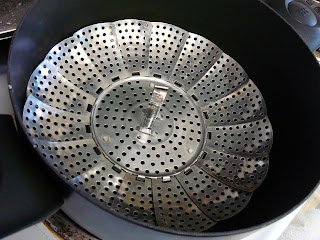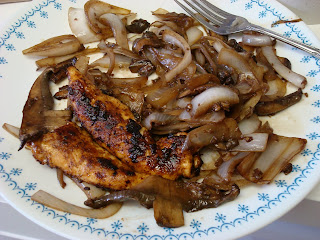Oh dear, has it really been two months? My apologies for the lapse in recipes! Time seems to get away from me and before I know it, it’s summertime. It is at these times I debate whether or not I should move to Seattle where I hear it rains 50% of the year, and the highs in the summer range around the mid-70s. I think I could get used to that.
I’m continuing work and taking a molecular biology laboratory class. So far it’s very exciting. What does everyone else have planned for the summer? Some beach visits or perhaps a good hike with a picnic? Don’t forget your sunscreen and bring lots of H2O!
This dessert is well known for its smooth, rich, and sweet flavor. With a hint of chocolate it is well recognized by its distinct red color. I made it for a friend of mine who will be moving out of state.
Red Velvet Cake with Cream Cheese Frosting
Did you know? Without food coloring, red velvet cake will still have a slight red color due to the cocoa being "Dutched" by baking soda. The Dutch Treatment involves treating regular cocoa, which is naturally acidic, with an alkali (such as potassium carbonate) in order to neutralize to cocoa. The Dutch process darkens the color of cocoa to a deep reddish brown and mellows the flavor. Baking soda is often used for leavening, and the alkaline baking soda will "Dutch" regular cocoa, producing a red color as if it contained Dutch process cocoa. Red food dye, of course, will drastically enhance the color of the cake.
For the cake:
1 tablespoon unsweetened cocoa powder
1 ½ teaspoons baking powder
½ teaspoon baking soda
¼ teaspoon salt
¾ cup unsalted butter
1 1/3 cup sugar
3 large eggs1 tsp vanilla1cup buttermilk
1- 3 tablespoons red food coloring
For the frosting (this is the doubled recipe for the layered cake):
16 oz. Cold cream cheese
10 tablespoons unsalted butter (softened)
4 tsp. Vanilla
3 ½ cups powdered sugar (more or less based on your taste preference)
How to make the cake:
Preheat the oven to 350 F. Have all ingredients at room temperature. Grease and flour two 9 x 2-inch or 8 x 2 inch round cake pans or line the bottoms with wax or parchment paper.
Whisk together flower, cocoa, baking powder, baking soda, and salt until thoroughly blended.
In a separate large bowl, beat ¾ cup unsalted butter (1 ½ sticks) until creamy. Gradually add 1 1/3 cup sugar and beat on high speed until light and fluffy (about 3 to 5 minutes).
Whisk together 3 large eggs and 1 tsp. Vanilla, then slowly add to butter/sugar mixture. I decided to save a bowl and just slowly beat in the eggs and it seemed to turn out fine.
Beating at a low speed, add the flour and buttermilk, alternating in 3 parts flour, 2 parts milk. Add red dye with the first batch of buttermilk. Beat until smooth.
Divide batter and spread evenly in pans. Bake until a toothpick inserted into the center comes out clean. Depending on the oven, the time will vary between 20 – 30 minutes. In the last ten minutes I would keep a close eye on the cake. Allow the cake to cool for a while before removing to a rack. Let cool completely before applying frosting.
How to make the frosting:
Using an electric mixer, beat cream cheese, butter, and vanilla at a low speed until just blended.
Add the powdered sugar 1/3 cup at a time (taste frequently to determine when you want to stop adding the sugar). Beat until smooth and desired consistency is reached. You are welcome to stir in additional flavoring such as lemon or orange zest, ground cinnamon, or liqueur. I topped the cake with strawberries and blackberries.
How to assemble:
Slice thin layer off the top of one of the cakes to make the surface flat.
Frost to liking.
Add 2nd layer of cake and complete frosting.
All that's left is to snarf it down.













































